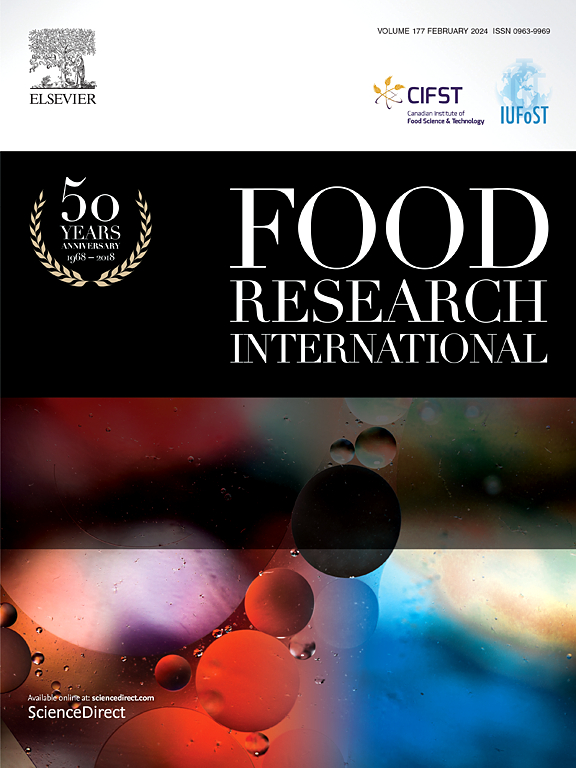机器学习和GC-MS揭示了切达奶酪在不同成熟时期与原产地无关的特征风味化合物
IF 8
1区 农林科学
Q1 FOOD SCIENCE & TECHNOLOGY
引用次数: 0
摘要
奶酪风味成分的复杂性、来源的不同和实验数据的可变性阻碍了对不同成熟时期切达奶酪风味的可信描述。本研究将GC-MS与机器学习相结合,探索了切达奶酪在6-12°C成熟阶段与产地无关的共同特征成分。6个分类器中的随机森林模型在评估切达奶酪成熟时间方面表现最好,并通过递归特征消去从66种风味物质中选择14种风味物质(酮类、酸类和内酯类)作为特征风味来训练模型。SHAP互作值和决策树揭示了决定成熟时间所需的最小风味物质及其浓度。最后,在我们的实验中,来自不同国家的商业切达奶酪验证了特征风味化合物的可靠性。这项研究首次证实了来自不同来源的切达奶酪的某些风味具有一致的形成机制,这推动了风味发展和成熟时间确定的研究。本文章由计算机程序翻译,如有差异,请以英文原文为准。

Machine learning and GC–MS revealing the characteristic flavour compounds of Cheddar cheese origin-independent at different ripening periods
The complexity of cheese flavour components, different origin and variability in experimental data have hindered credible flavour description of Cheddar cheese at different ripening time periods. This study combined GC–MS with machine learning to explore the common characteristic ingredients of Cheddar cheese independent of origin during ripening stage at 6–12 °C. A random forest model among six classifiers performed best in assessing Cheddar cheese ripening time and 14 flavour substances (ketones, acids, and lactones) were selected as characteristic flavours by recursive feature elimination from 66 flavour substances to train the model. SHAP interaction value and decision trees revealed the least flavour substances and their respective concentrations required to determine ripening time. Finally, commercial Cheddar cheese from various countries in our experiment validated the reliability of characteristic flavour compounds. This study is the first to confirm that certain flavours of Cheddar cheeses from diverse origins share consistent forming mechanisms, advancing research on flavour development and ripening time determination.
求助全文
通过发布文献求助,成功后即可免费获取论文全文。
去求助
来源期刊

Food Research International
工程技术-食品科技
CiteScore
12.50
自引率
7.40%
发文量
1183
审稿时长
79 days
期刊介绍:
Food Research International serves as a rapid dissemination platform for significant and impactful research in food science, technology, engineering, and nutrition. The journal focuses on publishing novel, high-quality, and high-impact review papers, original research papers, and letters to the editors across various disciplines in the science and technology of food. Additionally, it follows a policy of publishing special issues on topical and emergent subjects in food research or related areas. Selected, peer-reviewed papers from scientific meetings, workshops, and conferences on the science, technology, and engineering of foods are also featured in special issues.
 求助内容:
求助内容: 应助结果提醒方式:
应助结果提醒方式:


